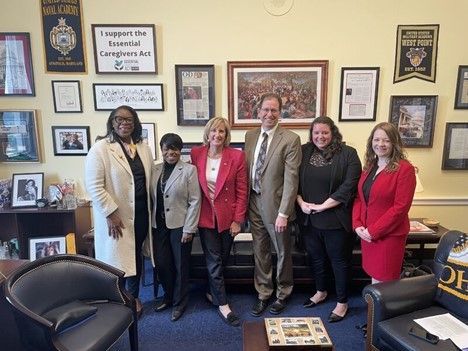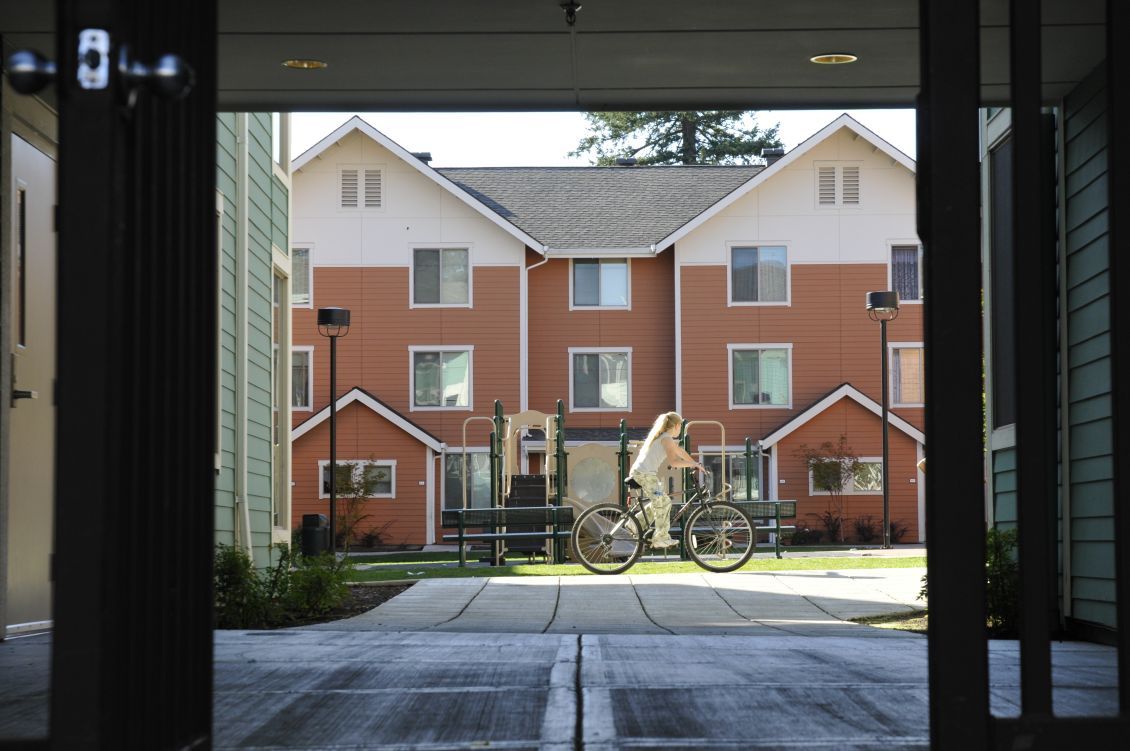March promises to be a crucial month for affordable housing. That’s when housing advocates anticipate the Senate may vote on a bill that could usher in the largest investment in affordable homes in decades.
How did we get here? On January 31, the House passed a tax package containing two important Low-Income Housing Tax Credit (Housing Credit) provisions by an overwhelming 357-70 vote. The bill, the Tax Relief for American Families and Workers Act of 2024 (H.R. 7024), would make it easier to finance affordable rental housing in two key ways: it would restore the 12.5 percent increase to the 9 Percent Credit, which expired in 2021, from 2023 (retroactively) until 2025, and it would lower the 50 percent Private Activity Bond (PAB) threshold for the 4 Percent Credit to 30 percent for two years.
The Housing Credit is responsible for financing nearly all affordable housing development in the United States. The provisions in the bill passed by the House are based on two of Enterprise’s key legislative priorities from the Affordable Housing Credit Improvement Act of 2023 (AHCIA). Together, the provisions could finance an estimated 200,000 additional affordable homes nationwide; generate over $34 billion in wages and businesses income; support over 304,000 jobs; and generate nearly $12 billion in federal, state, and local tax revenue.
However, “the window is closing,” says Ayrianne Parks, Enterprise’s senior director for policy advocacy. “If Congress doesn’t seize this moment and enact H.R. 7024, we likely won’t have another opportunity to advance our Housing Credit priorities until late 2025.”
We spoke to Parks about the significance of the tax package before Congress, the origins of strong bipartisan support for the bill, and how Enterprise has played a leading role in advocating for its passage.
Everyone knows that there's an affordable housing shortage and these provisions are the solution. Now, we just need to see Congress take action to enact it.
Why are these Housing Credit provisions so important and what impact will they have if the bill is passed?

Overall, these two provisions alone would create or preserve a significant number of homes over the next decade. While the Housing Credit has had a tremendous impact across the country, much more affordable housing is still needed to meet the demand. The country has a gap of 7.3 million homes that are affordable and available to extremely low-income renters, and households at almost every income level struggle to find adequate and affordable homes.
To drill down on the numbers: the 9 Percent Credit is a highly competitive process administered by state Housing Finance Agencies (HFAs) and it gets the most amount of subsidy into Housing Credit projects at the state and community level. Those projects financed by the 9 percent are often the hardest to make financially feasible, serving residents with the lowest incomes, people with disabilities, and people experiencing homelessness, as well as permanent supportive housing and locations that are more difficult to develop.
In 2018, we secured a four-year, 12.5 percent increase—the first expansion to the Housing Credit in nearly a decade. And since its expiration in 2021, we have been advocating for its restoration and for more resources for housing generally. We’re seeing significant cuts proposed in the House for federal programs that often provide an important piece of financing for Housing Credit projects, like the HOME Program. We can't afford to go backward right now. These cuts came as housing production costs surged due to inflation, material and labor shortages, and high interest rates, making it exceedingly difficult to finance new affordable housing. We could use a much larger increase in the 9 percent allocation, but restoring the 12.5 percent increase that expired is an important first step.
That’s why it’s also so important to lower the 50 percent test for the 4 Percent Credit. The 4 Percent Credit provides less subsidy to the project and has historically been a critical resource for rehab and preservation of affordable housing. However, because there are not enough 9 Percent Credits to meet demand, more and more developers are pursuing 4 Percent Credits for both preservation and new construction projects. To secure the 4 Percent Credit, projects must have at least 50 percent of the financing come from PABs, which are in and of themselves a finite resource.
There are a lot of different activities that can be financed with tax-exempt bonds, including things like infrastructure projects, schools, mortgage programs, and a number of other community activities. As interest rates have gone up, demand for those bonds outside of housing has increased. Once states run up against their bond cap, that means that no more 4 Percent Credit deals can be done.
Expanding the 9 Percent Credit and reducing how much bond financing is required to unlock the 4 Percent Credits would be a huge win for the millions of people who need an affordable place to live.

You’ve talked about the strong bipartisan support for expanding and improving the Housing Credit. Can you describe how you've seen the consensus grow and what you think has driven that support?
The Affordable Housing Credit Improvement Act of 2023 (AHCIA) is bipartisan, bicameral legislation. In fact, it is the most bipartisan bill in Congress. The AHCIA has been introduced in the past four congresses, but currently we have had more lead co-sponsors on the House bill than we've ever had. The bill was introduced in May with 66 members of Congress, evenly split between Republicans and Democrats and including members of leadership. Each month, the levels of support have grown. We are really excited that we hit a huge milestone with 218 House cosponsors, securing a simple majority of that chamber—and that support is evenly divided by party. In a time when agreement among political parties is becoming quite rare, the AHCIA serves as a testament to the overwhelming need for affordable housing in our country and the effectiveness of the Housing Credit.
This recognition of the Housing Credit’s critical role in affordable housing can be seen at the state and local levels of government too. In late September, 184 local government leaders representing cities, counties, and other municipalities of all sizes across the country sent a letter to Congressional leadership in support of the AHCIA. We were also thrilled when the National Governors Association’s (NGA) called out the housing provisions as one of the reasons for supporting the tax package in a recent statement they issued. The NGA’s endorsement is quite notable, because they only make endorsements if all 55 state and territorial governors agree to do so.
At the federal level down to the state and local level, we are working hard to make it clear to our elected officials that this is an urgent need facing all of our communities, including rural, urban, and suburban areas.
Can you talk about the role that Enterprise plays in advocating for all of this? How have you been involved personally?
The Tax Relief for American Families and Workers Act of 2024 reflects the long, hard work of Enterprise, our key partners at the national and local levels, and our bill champions in both chambers, who insisted that the Housing Credit be included in the tax package. Enterprise has long played a leading role in advocating for the Housing Credit.
We are one of the largest Housing Credit syndicators in the country, and we're an owner and operator of 13,000 affordable homes for around 22,000 residents in the Mid-Atlantic. We’re in a unique position in that we own, operate, syndicate, develop programs and policies, in addition to our advocacy and research—all with the goal of working toward creating decent, affordable homes that serve as places of pride, power and belonging. And that’s not to mention our state and local policy team, working with partners on the ground. Because of this breadth of expertise and experience, we have a lot of credibility both among our partners, but also in Congress, working to demonstrate and connect what this policy is doing in their communities, in their districts, and their states.
Of course, we don’t do this alone. Enterprise co-chairs the ACTION Campaign, a group of 2,400 businesses, nonprofits, think tanks and public entities—all of us coming together to support affordable housing and to work on the Affordable Housing Credit Improvement Act, helping advise and provide recommendations to Congress on ways to both expand and improve the Housing Credit. In this role, we work closely with our co-chair at the National Council of State Housing Agencies to create an advocacy strategy and build coalition membership. My days are spent leading this charge in all this work on behalf of the Enterprise team!
It seems like the Housing Credit angle is often missed in mainstream media coverage of the current tax package. Why is this?
Part of it is that you can walk past a Housing Credit property in my neighborhood, and in many neighborhoods, and you won't know that it's a Low-Income Housing Tax Credit property. This is also true for the New Markets Tax Credit, which is a community and economic development resource for low-income communities that is modeled after the Housing Credit. I often go into a Member of Congress's office and tell them about an affordable housing development, a community center, an economic hub, and they’ll say, ‘I didn't know that was a tax credit property.’ That’s why this advocacy is so important.
Policy ideas can seem very intangible at times, so it’s important to connect them to real life and the real impact on people and their lives. Members of Congress have really started to recognize and understand the importance of these provisions once they’ve seen it – visiting properties and meeting with people who live there.
I lived in low-income housing when I was young, and my mom was a single mom. Because of my experience, I think I have a bit more of a realistic rather than purely ideological standpoint. I understand this might not be the perfect solution for meeting all needs, which is why we advocate for other critical resources for housing and economic mobility. The number one goal of this program is to make sure there are affordable homes being built and preserved for low-income people, and the Housing Credit has been incredibly effective at that. This program has created at least some piece of financing for pretty much all affordable housing since 1986. There really is no other tool, especially one that will be consistent regardless of political leadership, that can get it done.
Looking ahead now, what is your outlook at this crucial time?
I am excited and optimistic about the opportunity the tax package provides, and especially the huge bipartisan win in the House. I am also concerned that time is starting to run short. The Housing Credit provisions are a piece of the tax legislation that is bringing people together, regardless of political party, to say this is an important proposal. It’s the most effective way we have to address a severe shortage in affordable housing that people are experiencing across the country in rural areas, in suburban areas, and in urban neighborhoods. Everyone knows that there's an affordable housing shortage and these provisions are the solution. Now, we just need to see Congress take action to enact it.


